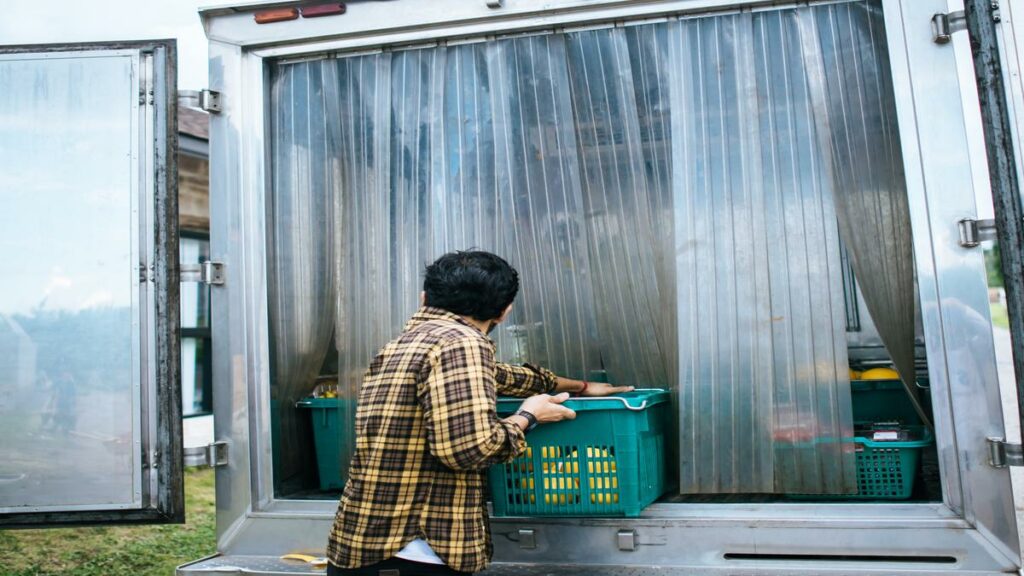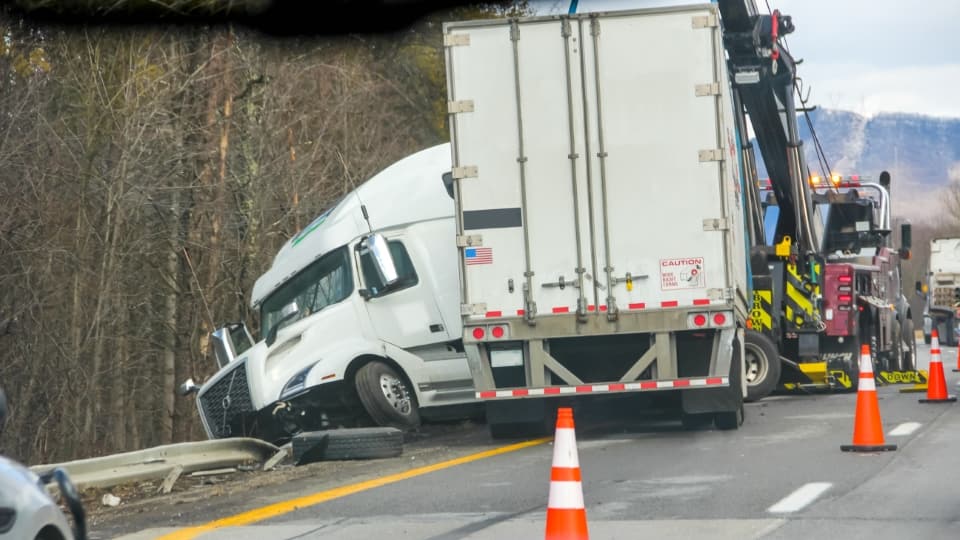2024 Trucking Trends: Future of Freight Forecast

The trucking industry stands at the threshold of transformative change. As we approach 2024, several key trends are reshaping the future of freight transportation. This comprehensive guide delves into the 2024 Trucking Trends, providing businesses with essential Freight Industry Forecast and Trucking Future Insights. Equip yourself with the knowledge needed to navigate the evolving trucking landscape successfully and stay ahead in the competitive market.
1. Accelerated Electrification of Fleets
The industry is experiencing a significant shift towards electrification, driven by the urgent need for sustainability and the rapid advancement of electric vehicle (EV) technology. This trend is not just about adopting new types of vehicles; it’s about reimagining the future of freight transportation in a more environmentally friendly and cost-effective manner.
The Drive Towards Electric Trucks
The global push for reducing greenhouse gas emissions has made the electrification of truck fleets a priority. Governments worldwide are implementing stricter emission regulations and offering incentives to encourage the adoption of electric trucks. Major manufacturers like Volvo, Daimler, and Tesla are responding by accelerating the development and production of electric models suitable for various types of freight operations.
Economic and Environmental Benefits
The transition to electric trucks offers significant economic and environmental benefits. Electric trucks have lower operating costs per mile compared to diesel trucks, primarily due to the lower cost of electricity and fewer moving parts, which reduces maintenance costs. Environmentally, electric trucks produce zero tailpipe emissions, contributing to cleaner air and helping companies meet sustainability goals.
Charging Infrastructure and Range Anxiety
A major concern in the adoption of electric trucks is the availability of charging infrastructure and the vehicles’ range. To address this, significant investments are being made to expand the network of fast-charging stations along major freight corridors. Advances in battery technology are also increasing the range of electric trucks, making them more viable for longer hauls and reducing range anxiety among fleet operators.
Integration with Renewable Energy
The electrification of truck fleets opens up opportunities for integrating with renewable energy sources. Companies are exploring the use of solar and wind power to charge electric trucks, further reducing the carbon footprint of their operations. This integration not only enhances the sustainability of trucking operations but also offers resilience against fluctuations in fossil fuel prices.
The Road Ahead
While challenges remain, such as the high initial cost of electric trucks and the need for a more extensive charging infrastructure, the trajectory towards fleet electrification is clear. With ongoing technological advancements and supportive policies, electric trucks are set to become a dominant force in the industry, offering a cleaner, more efficient alternative to traditional diesel trucks.
2. Advancements in Autonomous Trucking
The realm of autonomous trucking is advancing at an unprecedented pace, signaling a major shift in how goods are transported. This evolution is not just about replacing the driver but creating a more efficient, safe, and sustainable logistics ecosystem.
The State of Autonomous Trucking
Autonomous trucks are currently undergoing extensive testing and development, with several levels of automation, from driver-assisted features to fully autonomous operations. Companies like Tesla, Waymo, and Nikola are at the forefront, developing trucks that can navigate highways and city streets with minimal human intervention.
Safety Enhancements
One of the most compelling arguments for autonomous trucking is the potential for drastically improved safety. Human error contributes to a significant percentage of road accidents, and autonomous trucks, with their advanced sensors, cameras, and AI algorithms, can react faster and more accurately than human drivers in critical situations. They’re designed to maintain safe distances from other vehicles, adhere strictly to traffic rules, and detect obstacles with precision, reducing the likelihood of accidents.
Operational Efficiency
Autonomous trucks can operate around the clock without the need for rest, unlike human drivers who are bound by hours-of-service regulations. This capability could revolutionize the trucking industry by significantly reducing delivery times and costs. Moreover, autonomous trucks can be programmed for optimal fuel efficiency, further lowering operational costs and reducing the environmental impact.
Challenges and Considerations
Despite the promising advancements, several challenges need addressing before autonomous trucks can be fully integrated into the logistics industry. Regulatory approval is a major hurdle, with safety standards and liability issues still under discussion. Additionally, the technology’s integration with existing infrastructure, like roads and traffic systems, requires careful planning and significant investment.
Future Outlook
As technology continues to evolve, the widespread adoption of autonomous trucks is becoming more feasible. Experts predict that within the next decade, we could see these vehicles becoming a common sight on our roads, transforming the trucking industry and the broader supply chain network.

3. Emphasis on Green Logistics
The industry is increasingly focusing on green logistics, driven by environmental concerns, regulatory pressures, and the growing demand for sustainable practices from consumers and businesses alike. This shift towards eco-friendly operations is not just a moral imperative but also a strategic business move, as it can lead to significant cost savings and competitive advantages.
The Rise of Eco-Friendly Trucking
Green logistics encompasses a range of practices aimed at minimizing the environmental impact of transportation activities. This includes reducing emissions, conserving resources, and optimizing supply chain operations to be more sustainable. Companies are exploring various strategies to green their trucking operations, from adopting alternative fuels to implementing energy-efficient driving techniques.
Alternative Fuels and Energy Sources
One of the key components of green logistics is the use of alternative fuels such as biodiesel, natural gas, and hydrogen fuel cells. These fuels emit fewer pollutants compared to traditional diesel and can be sourced from renewable materials, contributing to a significant reduction in the carbon footprint of trucking operations. Additionally, some companies are experimenting with electric trucks powered by renewable energy sources like solar or wind power, further enhancing the sustainability of their fleets.
Operational Efficiency and Waste Reduction
Improving operational efficiency is another crucial aspect of green logistics. This involves optimizing routes to reduce travel distances and fuel consumption, implementing efficient loading practices to maximize cargo space, and reducing idle times to minimize emissions. Advanced software and analytics tools are increasingly used to analyze and improve the efficiency of logistics operations, leading to lower environmental impact and cost savings.
Sustainable Supply Chain Management
Green logistics also extends to broader supply chain management practices. Companies are adopting sustainable procurement policies, choosing suppliers and partners who adhere to environmental standards, and prioritizing products with minimal packaging or recycled materials. By integrating sustainability into every aspect of the supply chain, businesses can ensure a holistic approach to reducing their environmental impact.
Challenges and Opportunities
While the transition to green logistics presents challenges such as higher initial costs for green technologies and the need for new skills and knowledge, it also offers significant opportunities. Companies that successfully implement green logistics practices can benefit from reduced operating costs, enhanced brand reputation, and compliance with environmental regulations, positioning themselves as leaders in sustainable trucking.
4. Enhanced Safety Protocols and Training
In the industry, where the stakes of road safety are high, the emphasis on enhanced safety protocols and comprehensive training programs is paramount. As we move into 2024, the industry is witnessing a significant shift towards adopting more rigorous safety measures and advanced training methodologies to ensure the well-being of drivers and the public.
Advancements in Safety Technology
The integration of advanced safety technologies in trucks is a game-changer for the industry. Features like collision avoidance systems, lane departure warnings, and electronic stability control are becoming standard. These technologies not only help in preventing accidents but also play a crucial role in mitigating the severity of incidents, thereby saving lives and reducing costs associated with crashes.
The Role of Telematics and Data Analytics
Telematics systems are revolutionizing the way trucking companies monitor and manage safety. By collecting and analyzing data on driving behavior, vehicle performance, and road conditions, these systems provide actionable insights to improve safety protocols. Fleet managers can identify risky driving patterns, such as harsh braking or rapid acceleration, and address them through targeted training programs.
Comprehensive Driver Training Programs
Investing in driver training is crucial for enhancing safety in the trucking industry. Modern training programs go beyond basic driving skills, encompassing areas like defensive driving, hazard recognition, and emergency response. These programs often leverage simulators and virtual reality (VR) technology, offering drivers a safe environment to practice and hone their skills without real-world risks.
Creating a Safety-First Culture
Cultivating a safety-first culture within trucking companies is essential for sustaining long-term safety improvements. This involves not only implementing policies and procedures that prioritize safety but also encouraging open communication and feedback from drivers. Recognizing and rewarding safe driving behaviors can reinforce the importance of safety and motivate drivers to adhere to best practices.

Navigating Regulatory Compliance
Staying compliant with industry regulations is a critical aspect of enhancing safety. Regulations are continually evolving, and companies must be proactive in keeping abreast of changes and ensuring their operations meet all legal requirements. This includes regular audits, compliance training, and investing in safety technologies that align with regulatory standards.
5. Integration with Supply Chain Technology
As the industry propels into 2024, the integration with supply chain technology is becoming increasingly pivotal. This trend is not just about adopting new tools; it’s about creating a seamless, transparent, and efficient logistics network that can adapt to the dynamic demands of the global market.
Real-Time Tracking and Visibility
The cornerstone of modern supply chain integration is real-time tracking and visibility. Advanced GPS and IoT (Internet of Things) technologies enable fleet managers to monitor truck locations, cargo conditions, and delivery statuses in real-time. This transparency helps in optimizing routes, reducing delays, and enhancing customer satisfaction by providing accurate delivery estimates and proactive management of any issues that arise.
Automated Dispatch and Routing
Automation in dispatch and routing is revolutionizing the trucking industry. AI-driven algorithms analyze vast amounts of data, including traffic patterns, weather conditions, and delivery windows, to determine the most efficient routes. This not only maximizes fuel efficiency and reduces delivery times but also alleviates the workload on dispatchers, allowing them to focus on more strategic tasks.
Enhanced Data Analytics for Decision Making
The integration with supply chain technology brings sophisticated data analytics to the forefront of trucking operations. Companies can now leverage data to gain insights into fleet performance, cost drivers, and market trends. These analytics support better decision-making, from optimizing fleet utilization to identifying opportunities for cost savings and improving overall supply chain resilience.
Collaborative Platforms for Supply Chain Synergy
Collaborative platforms are breaking down silos between different supply chain stakeholders, fostering a more cooperative and synchronized approach to logistics management. These platforms facilitate information sharing and coordination among manufacturers, carriers, distributors, and retailers, ensuring that everyone is aligned and working towards common goals of efficiency and customer satisfaction.
Challenges and Future Prospects
While the integration with supply chain technology offers numerous benefits, it also presents challenges such as cybersecurity risks, the need for skilled personnel to manage advanced systems, and the initial investment in technology. However, as these technologies become more accessible and their advantages more apparent, their adoption is expected to grow, driving significant improvements in the efficiency and reliability of trucking operations.
6. Addressing the Driver Shortage and Workforce Challenges
The industry is currently facing a critical challenge: a significant shortage of qualified drivers. This issue, compounded by broader workforce challenges, is prompting companies to rethink their strategies for attracting, training, and retaining talent in 2024 and beyond.
Understanding the Driver Shortage
The driver shortage is primarily due to an aging workforce, with many drivers retiring and not enough new entrants to fill the gap. Additionally, the demanding nature of the job, including long hours and time away from home, makes it less appealing to younger generations. The industry must address these perceptions and realities to attract a new wave of drivers.
Innovative Recruitment Strategies
To combat the driver shortage, companies are adopting innovative recruitment strategies. These include offering competitive salaries, sign-on bonuses, and comprehensive benefits packages. Moreover, emphasizing work-life balance, providing flexible scheduling options, and creating a more inclusive work environment can attract a diverse pool of candidates, including younger drivers and women.
Enhanced Training and Development Programs
Investing in training and development is crucial for not only attracting new drivers but also enhancing the skills of the existing workforce. Modern training programs leverage simulators and virtual reality (VR) to provide realistic and safe training experiences. These programs focus on both driving skills and soft skills like communication and stress management, preparing drivers for the complexities of modern trucking operations.
Leveraging Technology for Driver Support
Technology plays a key role in addressing workforce challenges. Telematics and mobile apps can make the job easier and more efficient for drivers by providing route optimization, real-time traffic updates, and easy access to support services. These tools can improve the overall job satisfaction and retention of drivers by reducing stress and enhancing their daily work experience.
Fostering a Positive Organizational Culture
Creating a positive organizational culture is essential for retaining a skilled and motivated workforce. This involves recognizing and rewarding good performance, providing opportunities for career advancement, and fostering a sense of community and belonging among employees. Companies that prioritize their workforce’s well-being and professional growth can build a loyal and committed team.
7. Navigating Regulatory Changes and Compliance
In 2024, trucking continues to navigate a complex landscape of regulatory changes and compliance requirements. Staying ahead of these changes is crucial for maintaining operational legality and avoiding costly penalties.
Keeping Up with Regulatory Changes
The trucking industry is subject to a wide range of regulations, from emissions standards and hours of service rules to safety and maintenance requirements. These regulations are continually evolving in response to technological advancements, environmental concerns, and safety findings. Companies must stay informed about these changes through reliable sources and industry associations to ensure they remain compliant.
The Impact of Environmental Regulations
Environmental regulations are becoming increasingly stringent, with a strong emphasis on reducing emissions and promoting sustainability. This includes mandates for using cleaner fuels, adopting electric vehicles, and implementing energy-efficient practices. Companies need to assess their environmental footprint and invest in green technologies and practices to meet these regulatory requirements and contribute to a more sustainable future.
Leveraging Technology for Compliance Management
Technology plays a pivotal role in managing compliance. Advanced software systems can track and monitor various aspects of operations, from driver hours and vehicle maintenance to cargo safety and route planning. These systems not only help ensure compliance with current regulations but also provide valuable data for auditing and reporting purposes.
Training and Education for Compliance
Ongoing training and education are essential for ensuring that all employees, especially drivers, understand and adhere to regulatory requirements. Regular training sessions, workshops, and e-learning platforms can be used to keep staff updated on the latest regulations and best practices, fostering a culture of compliance within the organization.
Preparing for Audits and Inspections
Audits and inspections are a regular part of the trucking industry, designed to ensure that companies comply with regulatory standards. Preparing for these evaluations involves conducting internal audits, maintaining accurate and up-to-date records, and ensuring that all aspects of operations are in line with regulatory expectations. Being well-prepared can minimize the risk of violations and penalties.
Stay ahead in the evolving trucking industry with our expert solutions. We deliver from Los Angeles to Las Vegas, with every city in between. Call us now for a free quote and embark on a journey towards operational excellence!
FAQ Section: Expert Insights into Trucking's Future
How can businesses effectively transition to an electric fleet?
Begin with a pilot program to understand operational impacts, explore financing options for EVs, and stay informed about government incentives to support electrification.
What are the benefits of integrating autonomous trucks into the fleet?
Autonomous trucks can enhance safety, increase operational efficiency, and reduce labor costs, contributing to a more sustainable and profitable business model.
How can the trucking industry improve its sustainability practices?
Adopting alternative fuels, investing in energy-efficient technologies, and optimizing logistics operations are key strategies for reducing the environmental impact of trucking activities.
Follow us on Instagram for the latest trends and insights in the trucking industry @lasvegasexpedited.
